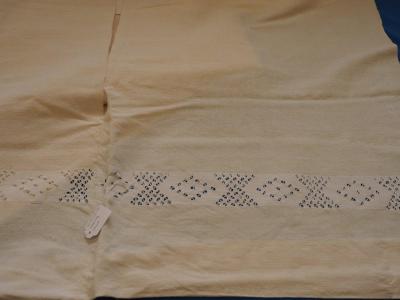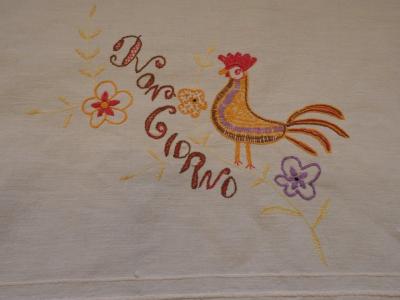HARDANGER, MAT
An exquisitely hand embroidered mat in hardanger technique, stitched in Perth in the early 20th century. Hardanger is a technique which has been a popular class taught by the Embroiderers Guild in Perth since its inception in 1969.
Hardanger is thought to have originated from the Middle East. From there it spread to Europe with links to the Renaissance white work and lace - reticella and Venetian needle laces. Reticella is a very geometric style with foundations in squares, diagonals, triangles, and arcs.
It is thought that since Italian and imported laces were so costly, the Norwegian needlewoman created her own version of ‘lace’ through embroidery. About the mid 18th C, the women of Hardanger, Norway, spun flax and wove it into linen fabric with a characteristic double thread. It was on this type of fabric that Hardanger embroidery was developed in its present form, using thick cotton and linen threads.
Traditionally, the embroidery was worked in white yarn on white fabric and the designs relatively simple. It was used to embellish collars, cuffs and apron borders of the ‘bunad’ a traditional festive folk costume. Since homes were full of soot until mid 19th C, hardanger was used exclusively for bunads, baptismal garments, bridal head coverings, liturgical pieces and articles for special occasions. Its popularity grew due to interest in the Victorian era for lavish decoration on tablecloths, towels, pillows and curtains.
Between the World Wars there was a decline. Since the 1970s there has been a revival. In modern times colour has been added and the designs have become more elaborate and incorporated other types of stitches.
Details
Details
Embroiderers' Guild of WA Textile Museum
Embroiderers' Guild of WA Textile Museum
More items like this
Other items from Embroiderers' Guild of WA Textile Museum
Scan this QR code to open this page on your phone ->


